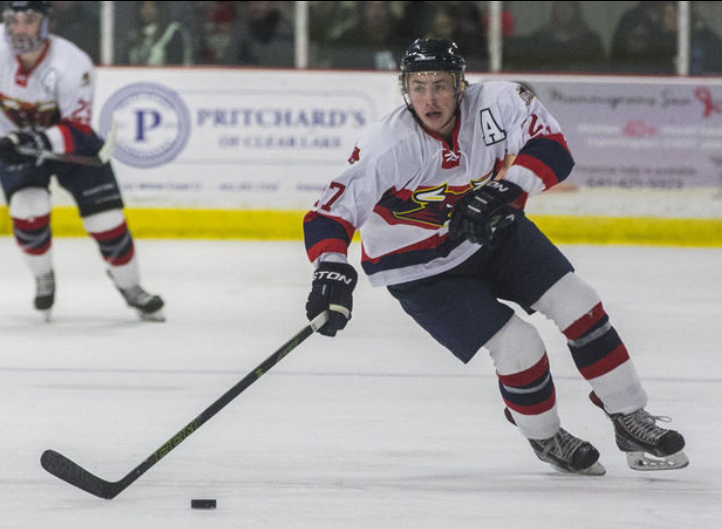
The process to playing any sport at the collegiate level is long and often turbulent. For men’s hockey, the process is especially long.
Every player on St. Thomas’ hockey team spent at least one year playing in a junior hockey league after graduating high school and before enrolling at St. Thomas; a majority of the team spent two years.
“In juniors it’s 24/7 hockey, hockey, hockey,” said St. Thomas hockey coach Jeff Boeser. “Our kids are just so mentally tough when they get here because they go through a lot in juniors. Coaches are hard on them, it’s not an easy life.”
Typical junior hockey leagues schedule more than 60 games per season, with practices and workouts daily. No other D-III sport has such an intense prerequisite system, so why does hockey?
Junior defenseman Jake Zeleznikar explains that junior hockey leagues were born from an American desire to keep up with Canadian teams.
“Historically, most NHL players come out of the major junior hockey leagues in Canada that force players to sacrifice their NCAA eligibility,” Zeleznikar said. “The NCAA feels pressure to keep up with these Canadian leagues and produce more high-caliber NHL talent.”
Zeleznikar added that the process of playing 120 games between high school and college helps the NCAA enhance the quality of its hockey and graduate more players into the NHL.
The extra development that junior hockey provides allows first-year players to make an immediate impact. Two of the St. Thomas team’s top four point-getters, Brett Gravelle and Johnny Panvica, were first-year students last season.
“After juniors, freshmen can come in and actually make a difference on the team, instead of sports like football where you sit out for two years and play practice team,” Panvica, a sophomore forward, said. “We get to come in as freshmen and actually get four good years.”
Panvica tallied 21 points last year as a first-year student, the fourth highest total on the team.
A majority of the team starts their first year with a two-year age gap between the rest of their class. The hockey team finished last year with a cumulative GPA of 3.5, Boeser said. The players think the two-year gap plays a large part in the team’s academic success.
“I think the couple gap years help a lot…you feel ready to come back (to school), I think the time off helps us with motivation,” Panvica said.
While dedicating two years to hockey development undoubtedly betters the product of play in NCAA hockey, it comes at a price.
“There are negatives to being a 21-year-old freshman,” Zeleznikar said. “You don’t really meet as many people outside of your team, you don’t get to experience dorm life.”
“I enjoyed my time playing (in juniors) and it was fun, but I would rather just go to college initially right out of high school,” Gravelle said.
The junior league system has made it near impossible to play college hockey directly out of high school.
“We had two high school kids this year that didn’t last a week. They wanted to try out and they don’t realize how tough it is,” Boeser said. “These 18-year-old kids aren’t physically, mentally or emotionally ready.”
The Tommies kicked off their season against St. Olaf Saturday, Oct. 28, losing 1-3. The Tommies won 3-2 against Hamline Sunday, Oct. 29 and face off against St. Mary’s on Friday, Nov. 3.
Kyle Manderfeld can be reached at mand4052@stthomas.edu.


